Double Dragon on Master System Reminds Us That Co-Op Isn't Everything
Two-player everywhere, but in our hearts
As always, Sonoran Videogame Society is a Substack dedicated to playing and exploring video games with friends like you. All posts are currently free, although if you like what I do and want to support me financially, I’d greatly appreciate it. Don’t forget to sign up here. Thanks for reading!
PLAYERS: 1-2 simultaneous
PUBLISHER: Sega
DEVELOPER: Technos (port by Sega)
If any brawler can give players lessons in the School of Wayward Fists, it’s Double Dragon. This game was among the first beat-em-ups to equip you with weapons and, more importantly, to provide two player co-op. No thanks to the latter features, Double Dragon was an instant success, paving the way for ports – as many as you could stomach. The flippin’ Atari 2600 got a port of this game! Way to keep the fire burning, Activision.
Most gamers either remember the NES port or the Master System port, and for good reason. In 1988, these were the only two consoles that could render proper punch-and-kickery (the near-flawless Genesis version wouldn’t show up until 1992). Neither 8-bit port is arcade perfect, though the Master System comes the closest. The NES version couldn’t handle Billy and Jimmy co-op play (despite the fact that Double Dragon II provided seamless co-op a year later), while the Master System delivered co-op ’til you co-drop. The Master System’s levels are closer in design to the original arcade levels, as well, while the NES version did more or less what it wanted. The NES port did receive a two-player fighting game and a unique upgrade system. With the latter, the more enemies you fought, the more points you received. Said points would then unlock new moves. This is a nice gesture on Technos’s part, but the fighting is primitive and gets old fast. Also, most of the unlockable moves are moves provided from the beginning in the Master System version.
So Double Dragon for the Master System is the default winner, right? Congratulations, Sega, you have the stronger console and thus the better looking, better playing port!… right? Well, hmm. The hit detection for Double Dragon is some of the worst I’ve tussled with in a while. Unless you’re staring your opponent directly in the face, you’ll be roundhouse kicking the air – and leaving yourself open for blows. Hit detection applies to you, but not to the lowlifes you’re up against. Unless you’re positioned apart from them, they can very well hit you wherever they feel like, as long as you’re within kicking distance.
Now, let’s say you and your opponent have locked eyes. You approach them and start being ruthless: headbutts, kidney jabs, the Alabama Shuffle. In the midst of your punches and kicks, your opponent will hit you, sometimes several times, while you are hitting them. What this means is you will always take damage during a fight. Always. The only way to potentially avoid getting hit is to jump kick, run away, jump kick, run away. And even then, sometimes they jump kick into you, sprawling both fighters on the ground. Not only does this suck the fun out of the game, but the NES port does not have this problem. In the NES version, when you got someone in a combo, they took your blows and then tried to sucker punch you.
In the NES version, you had three lives to beat all four stages. No continues. Your life bar was ample and would refill at the beginning of a new stage, but otherwise, those three lives were like precious street diamonds. The NES version is tough, sure, but not because the fighting is cheap. Double Dragon for the Master System has unlimited continues until stage 4 – because the game is just that balls hard. Unless your skills are otherworldly or you’re playing with a buddy who’s seen his fair share of the streets, there is no way anyone would make it past stage 1 without these continues. Their inclusion signifies Sega’s laziness. Sega rarely provides continues in their action games (and this port is by Sega, so I feel comfortable calling it a Sega game), let alone a charitable amount like “unlimited.” Sure, they dry up on the last stage, but only because there has to be challenge somewhere.
Old habits die hard. In this case, my habit of preferring the NES to the Master System. Double Dragon for the NES may have been the neutered punk between the two ports, but the dearth of co-op didn’t ruin the game. Given the Master System’s roided insides, this version should have been as close to perfection as possible. Alas, no co-op in the world could make Sega’s busted brawling feel right. At least Technos admitted that when they developed Double Dragon for the NES/Famicom, they were unfamiliar with the system’s hardware. What’s Sega’s excuse?


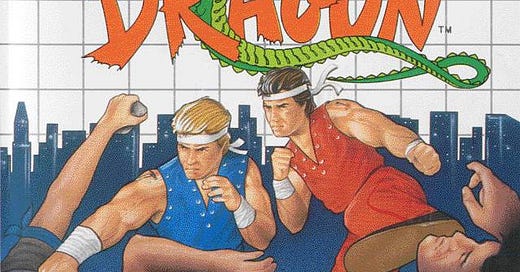



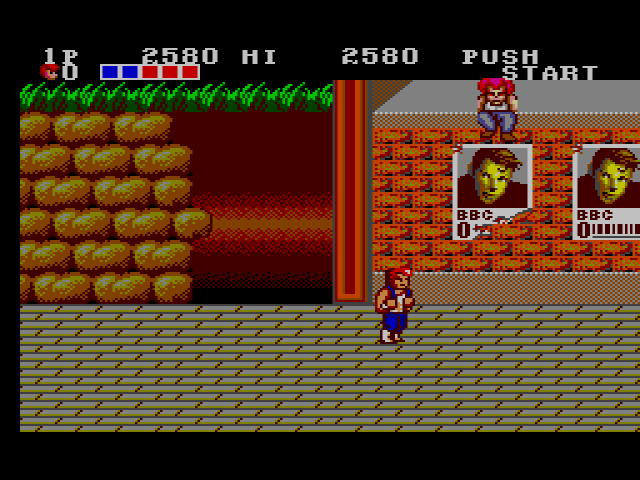
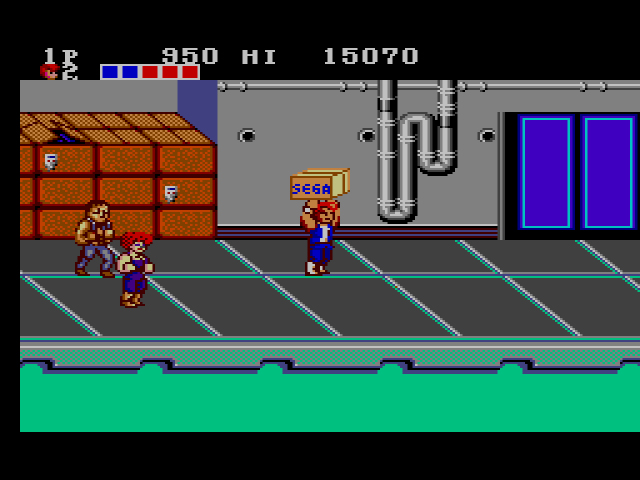
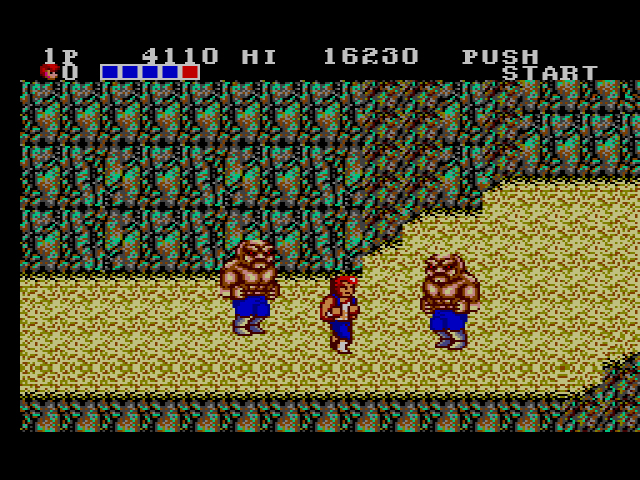
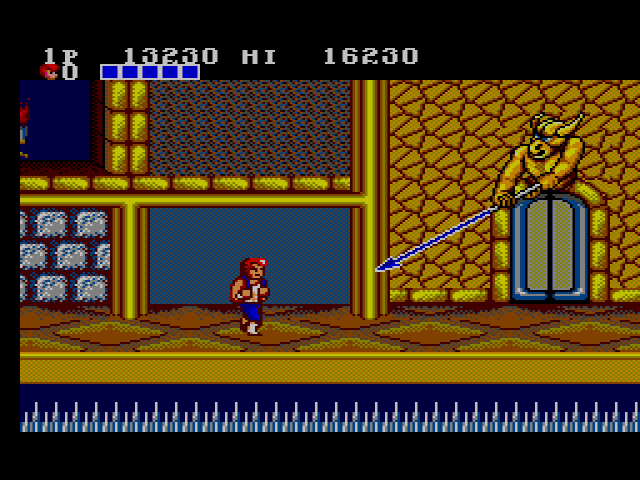
One general question I have: when someone like Sega creates a port of a game made by someone else for their own hardware, what level of assistance are they offered, if any? Whether in the form of access to personnel involved in the original game, code, art assets, etc.?
Or another way to ask it: what advantages did Sega have when porting their OWN arcade games, compared to someone else's?
My general sense is that a remarkable amount of stuff had to be reverse-engineered and rebuilt from scratch. I can easily see how that focus on reverse-engineering can lead to a development process where the entire emphasis is on the best possible fidelity to the previous product and no one steps back and asks, "Did we make something fun?" Instead, they expect the fun to come automatically from the fidelity. Or they let the fidelity consume all their time so in the end they're rushed and never have time to think about fun.
Double Dragon on NES is more like a "re-imagining" of the arcade game than a port of it. It's still a flawed game, but during the design process they clearly decided to de-emphasize fidelity and instead emphasize fun. And also someone decided to make that 1v1 mode which was my favorite part of the thing anyway.
Loved the arcade game so much back in the day but damn the ports of Double Dragon were all lousy. I had the C64 game and rented out the Master System version and they were both awful. Just terrible.
Double Dragon was one of the first major gaming heartbreakers. Great read resurfacing all this buried pain.